How We Think—Does It Matter?
In my first year of TCM studies, long ago in 1995, I was bitterly disappointed when I quickly realized all was not as it was purported to be. Teachers were talking and writing about a different way of thinking, a more circular, less linear-reductionistic way, but what I observed was that this was for the most part lip service. In reality they were using the same old reductionistic ways of thinking that I was well familiar with. I felt betrayed and disappointed. I want to be crystal clear at this point about what I am NOT saying: I am not claiming this reductionistic way of thought so dominant in the modern era does not have it merits and its uses. It does indeed have a good side to it, and a lot has been accomplished through this way of perceiving the world. But I did not attend TCM college to get more of the same. I had been a math teacher and had also studied logic in college and was quite good at that sort of thought, but in changing my career to Chinese medicine I was looking for a different way, a different approach to sorting through information. It wasn’t until I graduated that I was able to find some teachers who could offer some help in this desired direction.
I was recently in a conversation with Heiner Fruehauf, Ph.D., L.Ac., a noted sinologist-herbalist-classical scholar, about this topic that occupies my thought a good deal of the time, and that is: How we think in Chinese medicine, how we make meaning clinically. This topic gets insufficient attention in Chinese medicine education, and yet it is so important. It is as if we imagine there is only one way of organizing our clinical thinking—the TCM way of analyzing signs and symptoms that we learned in school. Heiner and I will publish the interview in a few months. I think it will be helpful to many people—at least that is my hope.
NUNM, where Heiner and I teach, is likely the only Chinese medicine college where courses in Chinese Cosmology and Symbolism are required parts of the program. Heiner’s own early background was in comparative literature and the European classics, and he moved on from there to Chinese literature and later Chinese medicine. These cosmology classes are his brainchild, and he is a compelling speaker in making his point that Chinese medicine is an ancient symbol science. My own studies in college focused on German literature and mathematics, so I received ample exposure to two radically different ways of thinking. In literature we need to think symbolically, but in math it is a linear-logical thinking that rules the day. Perhaps because of this I am acutely aware always that there is more than one way to formulate our clinical thinking in Chinese medicine.
I have written previous blogs about my interest in dream work in Chinese medicine (two chapters in the Neijing cover the diagnostic significance of dreams). In dreams obviously, at least if one accepts Carl Jung’s brilliant work (and that of others), we are dealing with symbols, not logic. This has made me particularly receptive to Heiner’s core message about Chinese medicine being a symbol science. Again and again in dream interpretation with patients I see Chinese medicine’s symbol system validated. Patients really do often dream in images that help us to understand their cases on a different level—I should say, if we are familiar with this type of symbolic thinking and our Chinese medicine symbols in particular.
If we come into the modern era in the West we see Gregory Bateson, a world-class scientist who worked in many fields, making the point that nature communicates in metaphor—literally in metaphor (not logic). Goethe, who was one of Bateson’s noted influences, claimed that nature is language. He meant it literally. I think the ancient Chinese saw things this way as well.
Bateson gave the interesting example of watching wolf behavior at a zoo. An adolescent male tried to mount a female in the pack. The alpha male grabbed the adolescent by the scruff of the neck and pushed his head to the ground where he held it for a bit. Bateson understood what was going on. Newly born pups are disciplined in exactly the same manner. The older alpha male was using a metaphor to communicate.
We treat poorly behaving little pups by pushing their heads down to the ground.
I am treating you the same way.
You are (therefore) nothing but a pup (still).
This is a variation of the famous “syllogism in grass:”
Grass dies.
Humans die.
Humans are grass.
Of course logicians jump up and point out the problems (logically) with this construction. What they want to see is the “syllogism in Barbara:”
Socrates was a man.
Men die.
Socrates will (therefore) die.
This type of logic though, although helpful to have in our kit as one tool to pull out when needed, will only get us so far in coming to understand our patients at a deeper level, especially the complicated cases. Metaphor, myth, images, these are the way in to a deeper understanding of our patients. It is as if we should require our prospective Chinese medicine students to take a term each of classical Chinese poetry and Zen poetry before beginning their studies. Personally I think this more valuable than college biology 101. Too often we are training our students to simply follow protocols without ever gaining any real insights into their patients. The protocol approach of course is helpful to a certain point, and I don’t want to be too critical of these efforts, but Heiner Fruehauf’s point has always been that Chinese medicine has the potential to be helpful even in very serious diseases—if we get this deeper level of meaning and allow it instead of rote protocols to drive our clinical thinking. The protocols will not get us there.
Our students at NUNM love this cosmology-symbolism perspective, and yet it has been my observation that they do not often bring this approach into the clinic treatment rooms. The only exception would be when patients share dreams as part of their intake interview (we often ask about recent dreams). Then some students occasionally can manage to bring in the material they have learned in the cosmology classes. It is surprising to patients and interns alike how these dream images are helpful in understanding their conditions. But in general, students have not yet managed to transition from our culture’s near exclusive focus on the logical method to a more symbol-oriented way. This should come as no surprise and does not in any way reflect a failure on their part—or on the part of our program at NUNM. Every waking hour of their lives they have been subjected to the implicit and explicit message that there is only one valid way to make meaning of things. It is now automatic for them to think this way. It takes real sustained effort to achieve “escape velocity” and to cut free from the gravitational pull of this cultural myopia.
A few years ago Heiner and I had a conversation in which I suggested that our accreditation standards ought to include a class in epistemology. He agreed. Epistemology is the branch of philosophy that studies the nature of knowledge, especially in terms of its limits and validity. We do after all practice a 2000-year old medicine; how one thought in the Han Dynasty is not how people in our modern culture commonly think. The ancient Han way and the modern positivistic way could in fact not be more different. It is nothing more than a modern conceit that our current way of thinking and coming to meaning is the only legitimate way. This wholehearted and exclusive embrace of the modern is quite common in our Chinese medicine community in the US. I am always saddened when practitioners feel proud to have abandoned all traditional ideas and strategies in the embrace of an exclusively modern approach to acupuncture. I have no argument with innovations—in fact I support moving our medicine forward in all kinds of ways—but there is no need to entirely abandon the old in sculpting something new.
I went to Japan in 2007 to study for ten days at the Meridian Therapy Summer Institute. While there Ikeda Masakazu came by to see our group for two hours. In talking he mentioned one thing that struck me. He said: “I can’t think and treat a patient at the same time.” Fascinating. I believe I understood him properly to be saying that he entered a state of flow with a patient and at that point discursive thought was not needed. His hands already knew how to understand what was to be done and knew how to assess how the treatment was progressing without being analytical. His treatments are a doing, not a thinking
The great German literary figure Johann Wolfgang von Goethe was also an amateur scientist. In fact he was much more proud of his work in science than of his significant literary accomplishments. He said something similar: “My thinking is a perception and my perception a thinking.” In other words, thought and perception were in him married. What we are taught is not this Goethean way; we are taught to perceive and then think about what we have perceived. That is quite different. It lacks the immediacy of the Goethean approach. It’s the difference between asking the meaning of a given finding and seeing that finding as an instance of meaning. I think this is where we need to go as practitioners, and we would be wise to include it in our education.
Courses By This Teacher
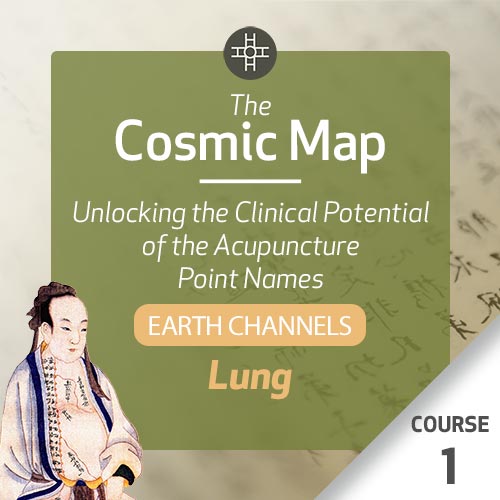
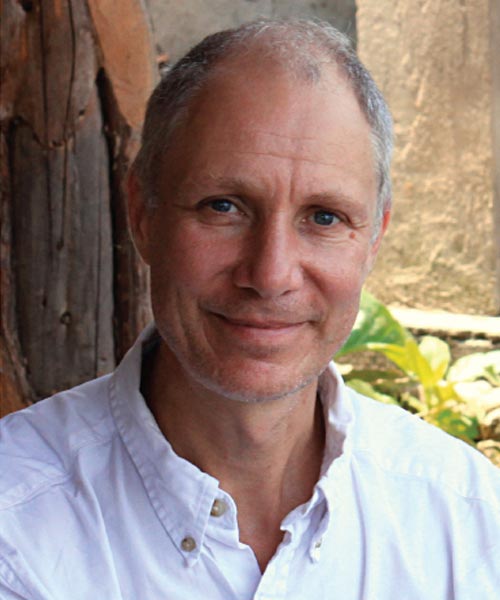
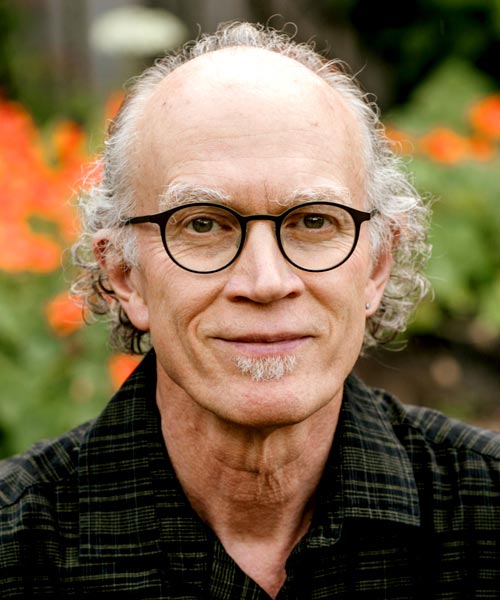
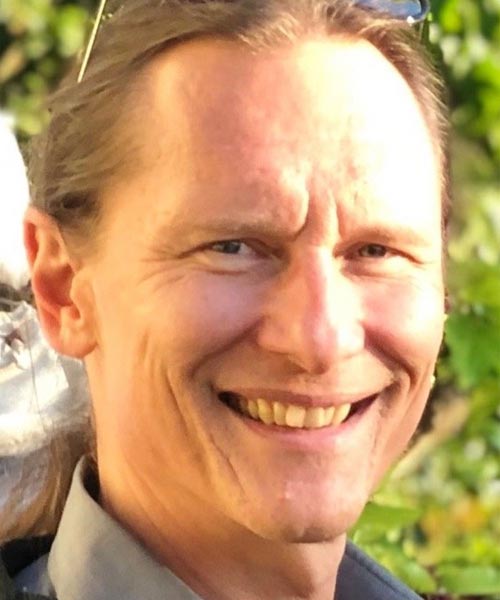
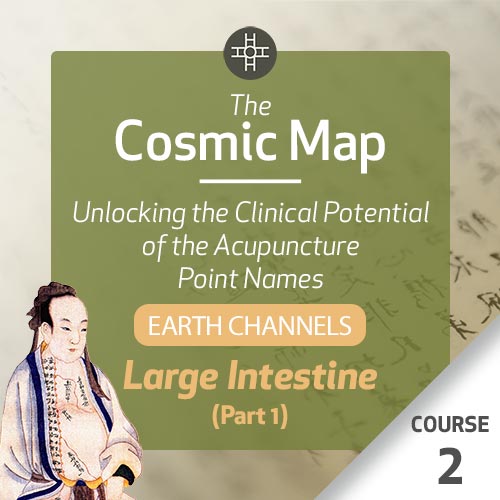



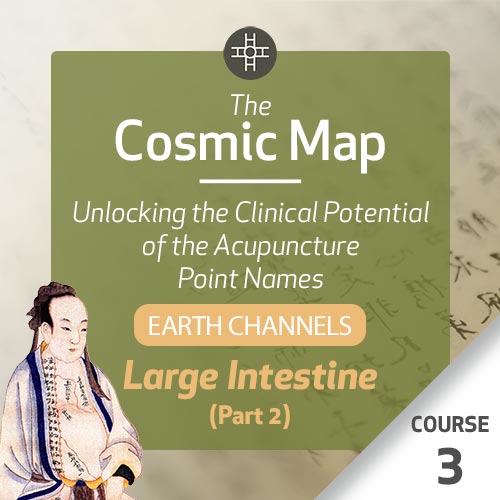



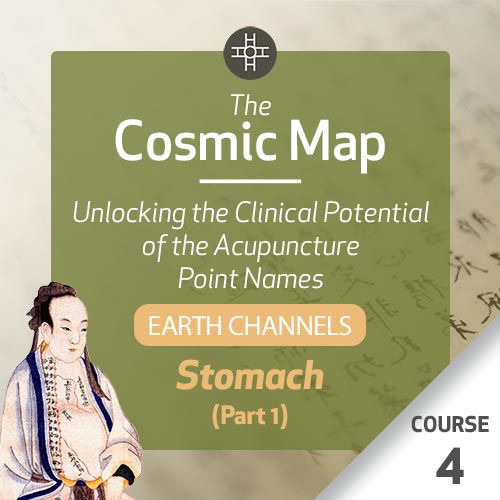



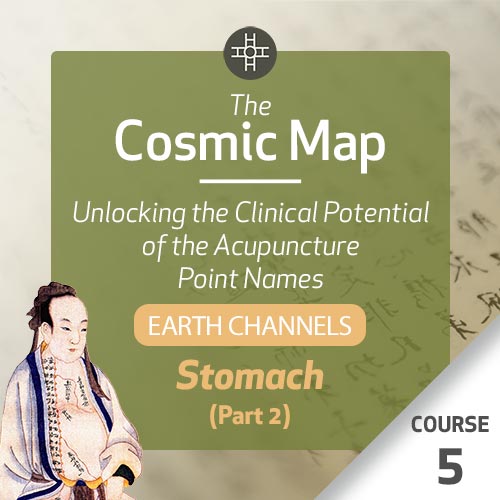



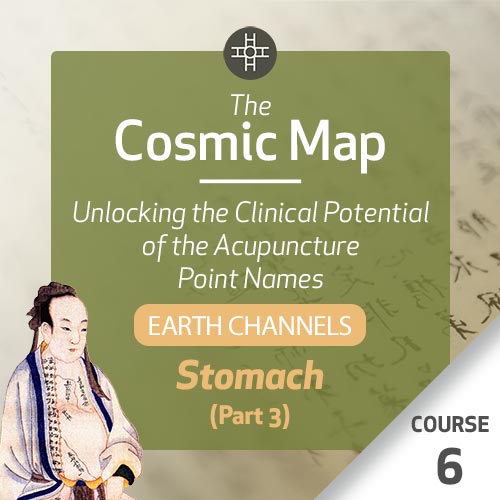



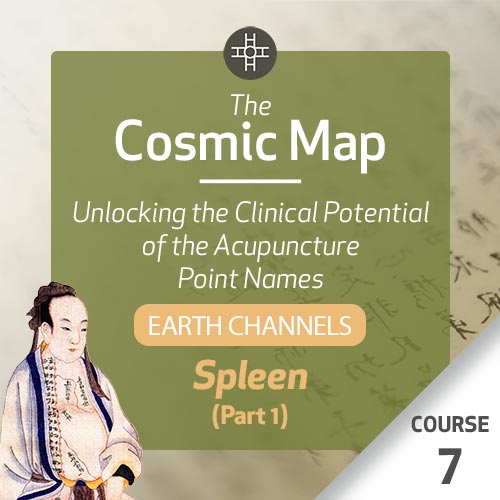



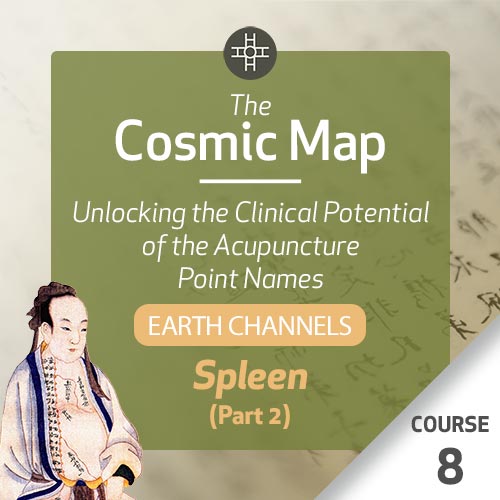



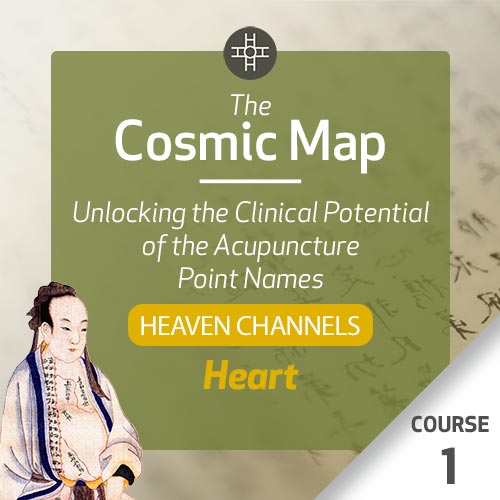



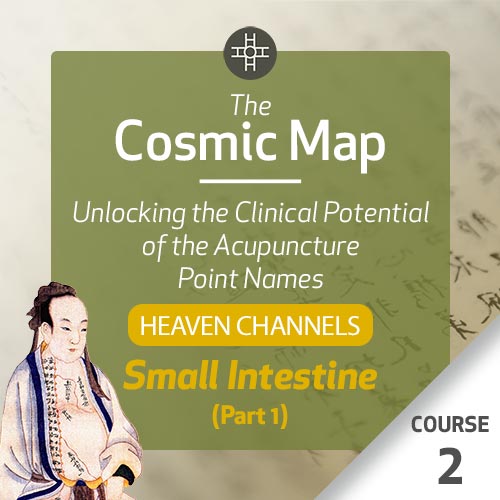



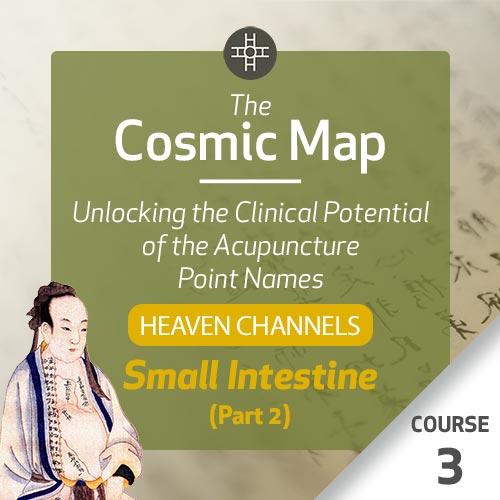



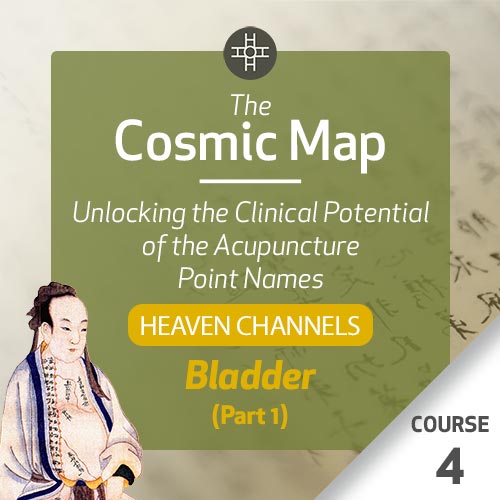



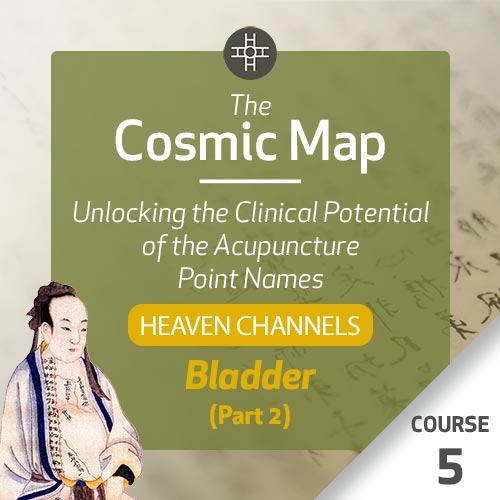



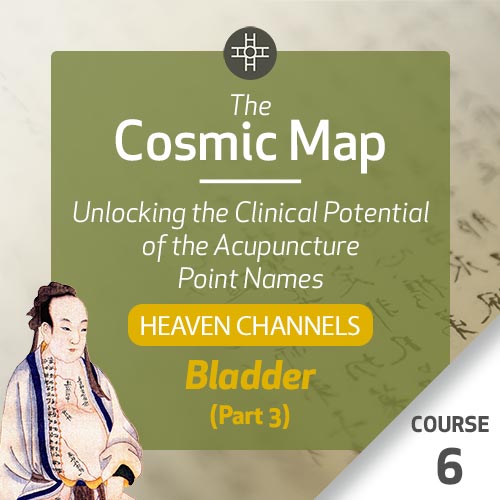



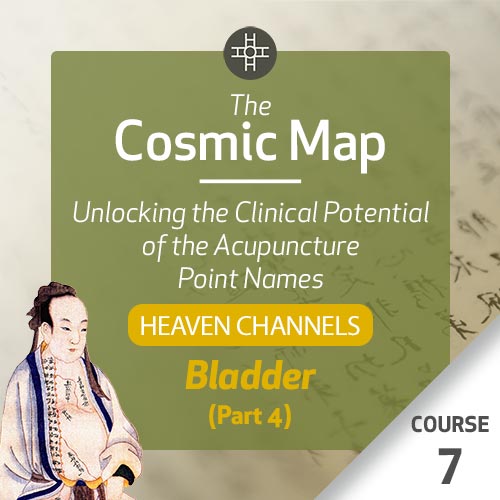



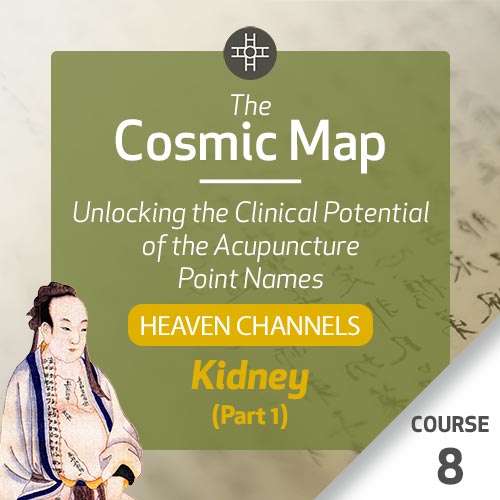



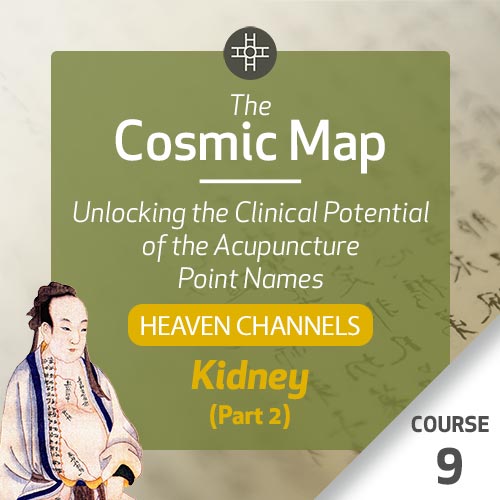



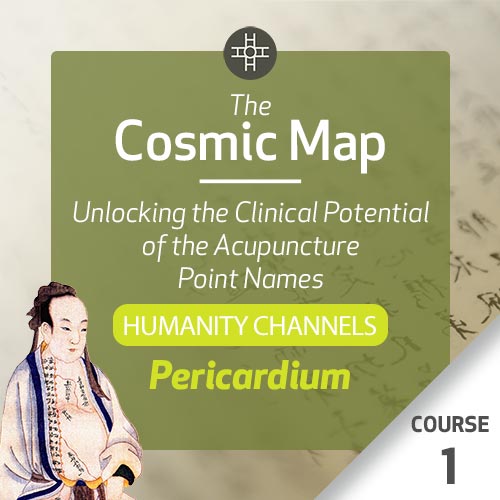



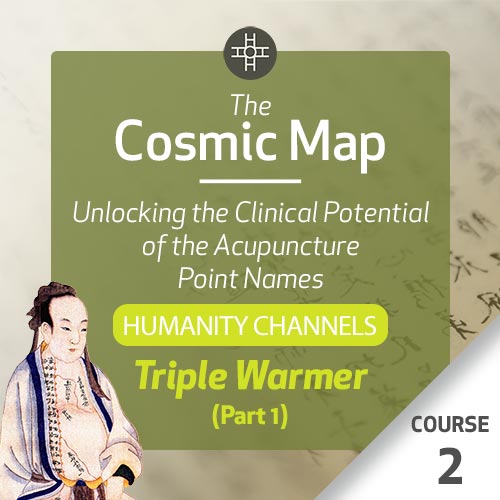



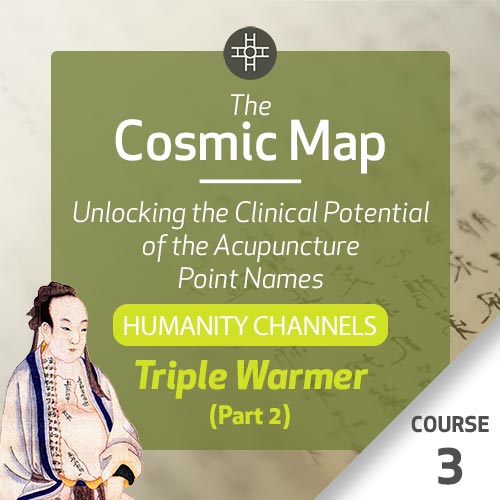



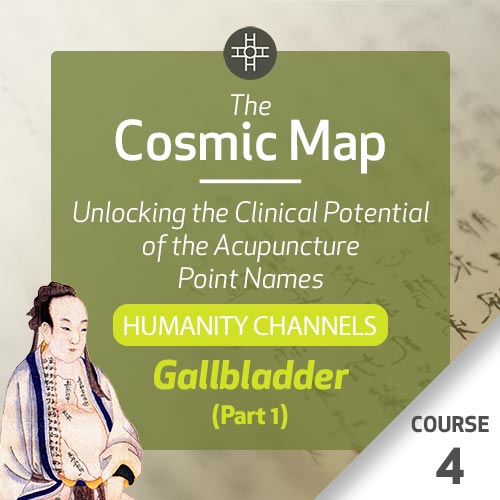



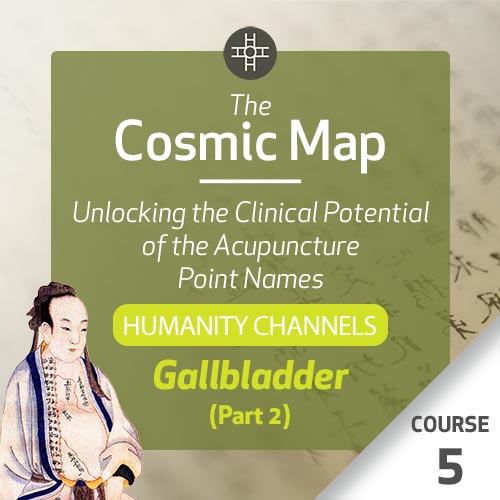



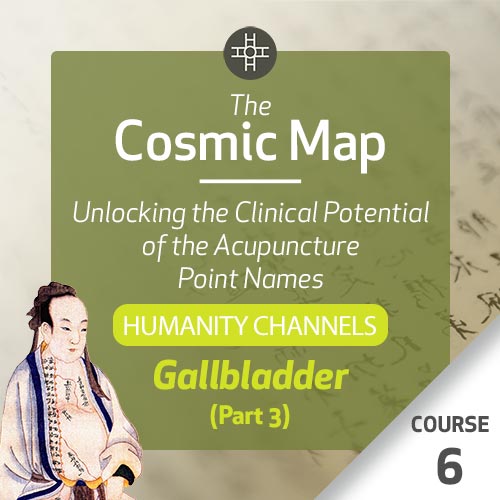



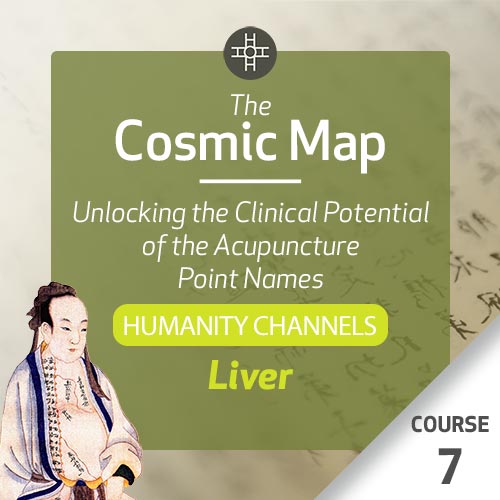



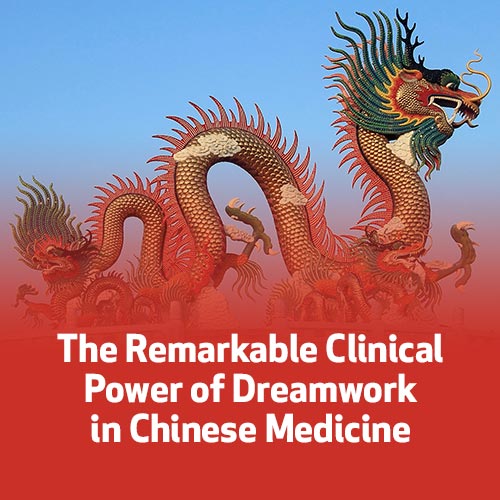
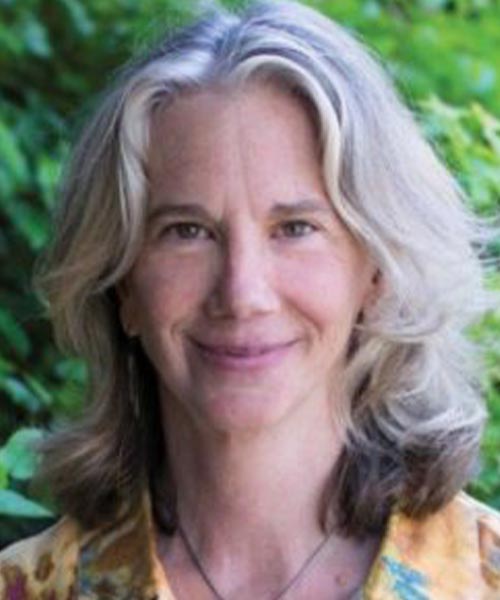



The Cosmic Map: Unlocking the Clinical Potential of the Acupuncture Point Names, Part 1: Earth Channels - Course 1
Lung
with Bob Quinn
See In StoreOverview
This course is designed to further the lifelong learner’s journey as they deepen their mastery of acupuncture point selections based on the profound information embedded in their classical names. Seasoned practitioners, students, and laypeople will all find value in this course.
Heiner Fruehauf will analyze the original meaning of each point name on the Lung channel in its multilayered complexity. The ancient acupuncture point names not only serve as mnemonic reminders about the location of each point, but also contain significant information revealing the unique energetic qualities and highly specific physiology and pathology of each point.
Heiner will tease out each layer of meaning through multiple translations. Relevant clinical context will be provided by the presentation of case examples or experience-based comments by senior acupuncturists Bob Quinn and Michael Berletich.
Heiner will share decades of research into the nuanced qualities of the acupuncture points, and instill in participants a tangible feel for their unique nature and energetic qualities.
With this base of knowledge, participants can stand on firm ground while being flexible in their ability to more deeply understand and select acupuncture points that can effectively treat the complex physical, mental/emotional and spiritual issues we encounter in our out-of-balance world.
Learning Objectives
- Elucidate the symbolism and story of the ancient acupuncture point names that serve as mnemonic reminders about their location, contain significant information, and reveal their unique energetic qualities and highly specific physiology and pathology.
- Describe the symbolic nature of the Lung channel and analyze the original meaning of the organ, meridian and point names in all their multilayered complexity including the cosmologic, energetic and physical viewpoints.
- Present the points of the Lung meridian so participants can understand how to hone their ability to select the most suitable points to effectively treat complex physical, mental/emotional and spiritual issues we encounter in our out-of-balance world.
- Discuss the physiologic actions, pathologic presentations and clinical applications of the Lung point represented by their name translations and their classical text indications with clinical and case examples.
Your Teachers

Heiner Fruehauf
Heiner Fruehauf is the Founding Professor of the College of Classical Chinese Medicine at National University of Natural Medicine (NUNM) in Portland, Oregon. As a practitioner, Dr. Fruehauf focuses on the complementary treatment of difficult and recalcitrant diseases, including cancer, chronic respiratory and digestive disorders, and inflammation of the nervous system.

Bob Quinn
Bob Quinn, DAOM, L.Ac. has been a full-time Associate Professor of Chinese Medicine at National University of Natural Medicine in Portland since 2009; before that, he taught and supervised at the Oregon College of Oriental Medicine. He first entered acupuncture practice in 1998 with a master’s degree from OCOM, and later returned to earn his doctoral degree in Chinese medicine in 2008.

Michael Berletich
Dr. Michael Berletich has been teaching for over 30 years. He received his Masters in Chinese Medicine (2005) and his clinical Doctorate in Chinese medicine (2016) from OCOM. He's worked the past 23 years as Professor, Clinician, Department Chair and Dean. He also maintains a busy private practice.
Categories
Tags
The Cosmic Map: Unlocking the Clinical Potential of the Acupuncture Point Names, Part 1: Earth Channels - Course 2
Large Intestine Part 1
with Bob Quinn
See In StoreOverview
This course is designed to further the lifelong learners’ journey as they deepen their mastery of acupuncture point selections based on the profound information embedded in their classical names. Seasoned practitioners, students, and laypeople will all find value in this course.
Heiner Fruehauf will analyze the original meaning of each point name on the Large Intestine channel in its multilayered complexity. The ancient acupuncture point names not only serve as mnemonic reminders about the location of each point, but also contain significant information revealing the unique energetic qualities and highly specific physiology and pathology of each point.
Heiner will tease out each layer of meaning through multiple translations. Relevant clinical context will be provided by the presentation of case examples or experience-based comments by senior acupuncturists Bob Quinn and Michael Berletich.
Heiner will share decades of research into the nuanced qualities of the acupuncture points, and instill in participants a tangible feel for their unique nature and energetic qualities.
With this base of knowledge, participants can stand on firm ground while being flexible in their ability to more deeply understand and select acupuncture points that can effectively treat the complex physical, mental/emotional and spiritual issues we encounter in our out-of-balance world.
Learning Objectives
- Present Large Intestine points so participants can understand how to hone their ability to select the most suitable points to effectively treat complex physical, mental/emotional and spiritual issues we encounter in our out-of-balance world.
- Discuss the physiologic actions, pathologic presentations and clinical applications of the Large Intestine point represented by their name translations and their classical text indications with clinical and case examples
- Elucidate the symbolism and story of the ancient acupuncture point names that serve as mnemonic reminders about their location, contain significant information, and reveal their unique energetic qualities and highly specific physiology and pathology
- Describe the symbolic nature of the Large Intestine channel and analyze the original meaning of the organ, meridian and point names in all their multilayered complexity including the cosmologic, energetic and physical viewpoints
Your Teachers

Bob Quinn
Bob Quinn, DAOM, L.Ac. has been a full-time Associate Professor of Chinese Medicine at National University of Natural Medicine in Portland since 2009; before that, he taught and supervised at the Oregon College of Oriental Medicine. He first entered acupuncture practice in 1998 with a master’s degree from OCOM, and later returned to earn his doctoral degree in Chinese medicine in 2008.

Heiner Fruehauf
Heiner Fruehauf is the Founding Professor of the College of Classical Chinese Medicine at National University of Natural Medicine (NUNM) in Portland, Oregon. As a practitioner, Dr. Fruehauf focuses on the complementary treatment of difficult and recalcitrant diseases, including cancer, chronic respiratory and digestive disorders, and inflammation of the nervous system.

Michael Berletich
Dr. Michael Berletich has been teaching for over 30 years. He received his Masters in Chinese Medicine (2005) and his clinical Doctorate in Chinese medicine (2016) from OCOM. He's worked the past 23 years as Professor, Clinician, Department Chair and Dean. He also maintains a busy private practice.
Categories
Tags
The Cosmic Map: Unlocking the Clinical Potential of the Acupuncture Point Names, Part 1: Earth Channels - Course 3
Large Intestine Part 2
with Bob Quinn
See In StoreOverview
This course is designed to further the lifelong learners’ journey as they deepen their mastery of acupuncture point selections based on the profound information embedded in their classical names. Seasoned practitioners, students, and laypeople will all find value in this course.
Heiner Fruehauf will analyze the original meaning of each point name on the Large Intestine channel in its multilayered complexity. The ancient acupuncture point names not only serve as mnemonic reminders about the location of each point, but also contain significant information revealing the unique energetic qualities and highly specific physiology and pathology of each point.
Heiner will tease out each layer of meaning through multiple translations. Relevant clinical context will be provided by the presentation of case examples or experience-based comments by senior acupuncturists Bob Quinn and Michael Berletich.
Heiner will share decades of research into the nuanced qualities of the acupuncture points, and instill in participants a tangible feel for their unique nature and energetic qualities.
With this base of knowledge, participants can stand on firm ground while being flexible in their ability to more deeply understand and select acupuncture points that can effectively treat the complex physical, mental/emotional and spiritual issues we encounter in our out-of-balance world.
Learning Objectives
- Discuss the physiologic actions, pathologic presentations and clinical applications of the Large Intestine point represented by their name translations and their classical text indications with clinical and case examples
- Present Large Intestine points so participants can understand how to hone their ability to select the most suitable points to effectively treat complex physical, mental/emotional and spiritual issues we encounter in our out-of-balance world.
- Elucidate the symbolism and story of the ancient acupuncture point names that serve as mnemonic reminders about their location, contain significant information, and reveal their unique energetic qualities and highly specific physiology and pathology
- Describe the symbolic nature of the Large Intestine channel and analyze the original meaning of the organ, meridian and point names in all their multilayered complexity including the cosmologic, energetic and physical viewpoints
Your Teachers

Michael Berletich
Dr. Michael Berletich has been teaching for over 30 years. He received his Masters in Chinese Medicine (2005) and his clinical Doctorate in Chinese medicine (2016) from OCOM. He's worked the past 23 years as Professor, Clinician, Department Chair and Dean. He also maintains a busy private practice.

Bob Quinn
Bob Quinn, DAOM, L.Ac. has been a full-time Associate Professor of Chinese Medicine at National University of Natural Medicine in Portland since 2009; before that, he taught and supervised at the Oregon College of Oriental Medicine. He first entered acupuncture practice in 1998 with a master’s degree from OCOM, and later returned to earn his doctoral degree in Chinese medicine in 2008.

Heiner Fruehauf
Heiner Fruehauf is the Founding Professor of the College of Classical Chinese Medicine at National University of Natural Medicine (NUNM) in Portland, Oregon. As a practitioner, Dr. Fruehauf focuses on the complementary treatment of difficult and recalcitrant diseases, including cancer, chronic respiratory and digestive disorders, and inflammation of the nervous system.
Categories
Tags
The Cosmic Map: Unlocking the Clinical Potential of the Acupuncture Point Names, Part 1: Earth Channels - Course 4
Stomach Part 1
with Bob Quinn
See In StoreOverview
This course is designed to further the lifelong learner’s journey as they deepen their mastery of acupuncture point selections based on the profound information embedded in their classical names. Seasoned practitioners, students, and laypeople will all find value in this course.
Heiner Fruehauf will analyze the original meaning of each point name on the Stomach channel in its multilayered complexity. The ancient acupuncture point names not only serve as mnemonic reminders about the location of each point, but also contain significant information revealing the unique energetic qualities and highly specific physiology and pathology of each point.
Heiner will tease out each layer of meaning through multiple translations. Relevant clinical context will be provided by the presentation of case examples or experience-based comments by senior acupuncturists Bob Quinn and Michael Berletich.
Heiner will share decades of research into the nuanced qualities of the acupuncture points, and instill in participants a tangible feel for their unique nature and energetic qualities.
With this base of knowledge, participants can stand on firm ground while being flexible in their ability to more deeply understand and select acupuncture points that can effectively treat the complex physical, mental/emotional and spiritual issues we encounter in our out-of-balance world.
Learning Objectives
- Present Stomach points so participants can understand how to hone their ability to select the most suitable points to effectively treat complex physical, mental/emotional and spiritual issues we encounter in our out-of-balance world.
- Discuss the physiologic actions, pathologic presentations and clinical applications of the Stomach points represented by their name translations and their classical text indications with clinical and case examples
- Describe the symbolic nature of the Stomach channel and analyze the original meaning of the organ, meridian and point names in all their multilayered complexity including the cosmologic, energetic and physical viewpoints
- Elucidate the symbolism and story of the ancient acupuncture point names that serve as mnemonic reminders about their location, contain significant information, and reveal their unique energetic qualities and highly specific physiology and pathology
Your Teachers

Michael Berletich
Dr. Michael Berletich has been teaching for over 30 years. He received his Masters in Chinese Medicine (2005) and his clinical Doctorate in Chinese medicine (2016) from OCOM. He's worked the past 23 years as Professor, Clinician, Department Chair and Dean. He also maintains a busy private practice.

Heiner Fruehauf
Heiner Fruehauf is the Founding Professor of the College of Classical Chinese Medicine at National University of Natural Medicine (NUNM) in Portland, Oregon. As a practitioner, Dr. Fruehauf focuses on the complementary treatment of difficult and recalcitrant diseases, including cancer, chronic respiratory and digestive disorders, and inflammation of the nervous system.

Bob Quinn
Bob Quinn, DAOM, L.Ac. has been a full-time Associate Professor of Chinese Medicine at National University of Natural Medicine in Portland since 2009; before that, he taught and supervised at the Oregon College of Oriental Medicine. He first entered acupuncture practice in 1998 with a master’s degree from OCOM, and later returned to earn his doctoral degree in Chinese medicine in 2008.
Categories
Tags
The Cosmic Map: Unlocking the Clinical Potential of the Acupuncture Point Names, Part 1: Earth Channels - Course 5
Stomach Part 2
with Bob Quinn
See In StoreOverview
This course is designed to further the lifelong learner’s journey as they deepen their mastery of acupuncture point selections based on the profound information embedded in their classical names. Seasoned practitioners, students, and laypeople will all find value in this course.
Heiner Fruehauf will analyze the original meaning of each point name on the Stomach channel in its multilayered complexity. The ancient acupuncture point names not only serve as mnemonic reminders about the location of each point, but also contain significant information revealing the unique energetic qualities and highly specific physiology and pathology of each point.
Heiner will tease out each layer of meaning through multiple translations. Relevant clinical context will be provided by the presentation of case examples or experience-based comments by senior acupuncturists Bob Quinn and Michael Berletich.
Heiner will share decades of research into the nuanced qualities of the acupuncture points, and instill in participants a tangible feel for their unique nature and energetic qualities.
With this base of knowledge, participants can stand on firm ground while being flexible in their ability to more deeply understand and select acupuncture points that can effectively treat the complex physical, mental/emotional and spiritual issues we encounter in our out-of-balance world.
Learning Objectives
- Present Stomach points so participants can understand how to hone their ability to select the most suitable points to effectively treat complex physical, mental/emotional and spiritual issues we encounter in our out-of-balance world.
- Elucidate the symbolism and story of the ancient acupuncture point names that serve as mnemonic reminders about their location, contain significant information, and reveal their unique energetic qualities and highly specific physiology and pathology.
- Discuss the physiologic actions, pathologic presentations and clinical applications of the Stomach points represented by their name translations and their classical text indications with clinical and case examples.
- Describe the symbolic nature of the Stomach channel and analyze the original meaning of the organ, meridian and point names in all their multilayered complexity including the cosmologic, energetic and physical viewpoints.
Your Teachers

Bob Quinn
Bob Quinn, DAOM, L.Ac. has been a full-time Associate Professor of Chinese Medicine at National University of Natural Medicine in Portland since 2009; before that, he taught and supervised at the Oregon College of Oriental Medicine. He first entered acupuncture practice in 1998 with a master’s degree from OCOM, and later returned to earn his doctoral degree in Chinese medicine in 2008.

Michael Berletich
Dr. Michael Berletich has been teaching for over 30 years. He received his Masters in Chinese Medicine (2005) and his clinical Doctorate in Chinese medicine (2016) from OCOM. He's worked the past 23 years as Professor, Clinician, Department Chair and Dean. He also maintains a busy private practice.

Heiner Fruehauf
Heiner Fruehauf is the Founding Professor of the College of Classical Chinese Medicine at National University of Natural Medicine (NUNM) in Portland, Oregon. As a practitioner, Dr. Fruehauf focuses on the complementary treatment of difficult and recalcitrant diseases, including cancer, chronic respiratory and digestive disorders, and inflammation of the nervous system.
Categories
Tags
The Cosmic Map: Unlocking the Clinical Potential of the Acupuncture Point Names, Part 1: Earth Channels - Course 6
Stomach Part 3
with Bob Quinn
See In StoreOverview
This course is designed to further the lifelong learner’s journey as they deepen their mastery of acupuncture point selections based on the profound information embedded in their classical names. Seasoned practitioners, students, and laypeople will all find value in this course.
Heiner Fruehauf will analyze the original meaning of each point name on the Stomach channel in its multilayered complexity. The ancient acupuncture point names not only serve as mnemonic reminders about the location of each point, but also contain significant information revealing the unique energetic qualities and highly specific physiology and pathology of each point.
Learning Objectives
- Present Stomach points so participants can understand how to hone their ability to select the most suitable points to effectively treat complex physical, mental/emotional and spiritual issues we encounter in our out-of-balance world.
- Elucidate the symbolism and story of the ancient acupuncture point names that serve as mnemonic reminders about their location, contain significant information, and reveal their unique energetic qualities and highly specific physiology and pathology.
- Discuss the physiologic actions, pathologic presentations and clinical applications of the Stomach points represented by their name translations and their classical text indications with clinical and case examples.
- Describe the symbolic nature of the Stomach channel and analyze the original meaning of the organ, meridian and point names in all their multilayered complexity including the cosmologic, energetic and physical viewpoints.
Your Teachers

Bob Quinn
Bob Quinn, DAOM, L.Ac. has been a full-time Associate Professor of Chinese Medicine at National University of Natural Medicine in Portland since 2009; before that, he taught and supervised at the Oregon College of Oriental Medicine. He first entered acupuncture practice in 1998 with a master’s degree from OCOM, and later returned to earn his doctoral degree in Chinese medicine in 2008.

Michael Berletich
Dr. Michael Berletich has been teaching for over 30 years. He received his Masters in Chinese Medicine (2005) and his clinical Doctorate in Chinese medicine (2016) from OCOM. He's worked the past 23 years as Professor, Clinician, Department Chair and Dean. He also maintains a busy private practice.

Heiner Fruehauf
Heiner Fruehauf is the Founding Professor of the College of Classical Chinese Medicine at National University of Natural Medicine (NUNM) in Portland, Oregon. As a practitioner, Dr. Fruehauf focuses on the complementary treatment of difficult and recalcitrant diseases, including cancer, chronic respiratory and digestive disorders, and inflammation of the nervous system.
Categories
Tags
The Cosmic Map: Unlocking the Clinical Potential of the Acupuncture Point Names, Part 1: Earth Channels - Course 7
Spleen Part 1
with Bob Quinn
See In StoreOverview
This course is designed to further the lifelong learner’s journey as they deepen their mastery of acupuncture point selections based on the profound information embedded in their classical names. Seasoned practitioners, students, and laypeople will all find value in this course.
Heiner Fruehauf will analyze the original meaning of each point name on the Spleen channel in its multilayered complexity. The ancient acupuncture point names not only serve as mnemonic reminders about the location of each point, but also contain significant information revealing the unique energetic qualities and highly specific physiology and pathology of each point.
Learning Objectives
- Elucidate the symbolism and story of the ancient acupuncture point names that serve as mnemonic reminders about their location, contain significant information, and reveal their unique energetic qualities and highly specific physiology and pathology
- Discuss the physiologic actions, pathologic presentations and clinical applications of the Spleen points represented by their name translations and their classical text indications with clinical and case examples
- Present Spleen points so participants can understand how to hone their ability to select the most suitable points to effectively treat complex physical, mental/emotional and spiritual issues we encounter in our out-of-balance world.
- Describe the symbolic nature of the Spleen channel and analyze the original meaning of the organ, meridian and point names in all their multilayered complexity including the cosmologic, energetic and physical viewpoints
Your Teachers

Bob Quinn
Bob Quinn, DAOM, L.Ac. has been a full-time Associate Professor of Chinese Medicine at National University of Natural Medicine in Portland since 2009; before that, he taught and supervised at the Oregon College of Oriental Medicine. He first entered acupuncture practice in 1998 with a master’s degree from OCOM, and later returned to earn his doctoral degree in Chinese medicine in 2008.

Michael Berletich
Dr. Michael Berletich has been teaching for over 30 years. He received his Masters in Chinese Medicine (2005) and his clinical Doctorate in Chinese medicine (2016) from OCOM. He's worked the past 23 years as Professor, Clinician, Department Chair and Dean. He also maintains a busy private practice.

Heiner Fruehauf
Heiner Fruehauf is the Founding Professor of the College of Classical Chinese Medicine at National University of Natural Medicine (NUNM) in Portland, Oregon. As a practitioner, Dr. Fruehauf focuses on the complementary treatment of difficult and recalcitrant diseases, including cancer, chronic respiratory and digestive disorders, and inflammation of the nervous system.
Categories
Tags
The Cosmic Map: Unlocking the Clinical Potential of the Acupuncture Point Names, Part 1: Earth Channels - Course 8
Spleen Part 2
with Bob Quinn
See In StoreOverview
This course is designed to further the lifelong learner’s journey as they deepen their mastery of acupuncture point selections based on the profound information embedded in their classical names. Seasoned practitioners, students, and laypeople will all find value in this course.
Heiner Fruehauf will analyze the original meaning of each point name on the Spleen channel in its multilayered complexity. The ancient acupuncture point names not only serve as mnemonic reminders about the location of each point, but also contain significant information revealing the unique energetic qualities and highly specific physiology and pathology of each point.
Learning Objectives
- Discuss the physiologic actions, pathologic presentations and clinical applications of the Spleen points represented by their name translations and their classical text indications with clinical and case examples
- Present Spleen points so participants can understand how to hone their ability to select the most suitable points to effectively treat complex physical, mental/emotional and spiritual issues we encounter in our out-of-balance world.
- Describe the symbolic nature of the Spleen channel and analyze the original meaning of the organ, meridian and point names in all their multilayered complexity including the cosmologic, energetic and physical viewpoints
- Elucidate the symbolism and story of the ancient acupuncture point names that serve as mnemonic reminders about their location, contain significant information, and reveal their unique energetic qualities and highly specific physiology and pathology
Your Teachers

Michael Berletich
Dr. Michael Berletich has been teaching for over 30 years. He received his Masters in Chinese Medicine (2005) and his clinical Doctorate in Chinese medicine (2016) from OCOM. He's worked the past 23 years as Professor, Clinician, Department Chair and Dean. He also maintains a busy private practice.

Heiner Fruehauf
Heiner Fruehauf is the Founding Professor of the College of Classical Chinese Medicine at National University of Natural Medicine (NUNM) in Portland, Oregon. As a practitioner, Dr. Fruehauf focuses on the complementary treatment of difficult and recalcitrant diseases, including cancer, chronic respiratory and digestive disorders, and inflammation of the nervous system.

Bob Quinn
Bob Quinn, DAOM, L.Ac. has been a full-time Associate Professor of Chinese Medicine at National University of Natural Medicine in Portland since 2009; before that, he taught and supervised at the Oregon College of Oriental Medicine. He first entered acupuncture practice in 1998 with a master’s degree from OCOM, and later returned to earn his doctoral degree in Chinese medicine in 2008.
Categories
Tags
The Cosmic Map: Unlocking the Clinical Potential of the Acupuncture Point Names, Part 2: Heaven Channels - Course 1
Heart
with Bob Quinn
See In StoreOverview
This course is designed to further the lifelong learner’s journey as they deepen their mastery of acupuncture point selections based on the profound information embedded in their classical names. Seasoned practitioners, students, and laypeople will all find value in this course.
Heiner Fruehauf will analyze the original meaning of each point name on the Heart channel in its multilayered complexity. The ancient acupuncture point names not only serve as mnemonic reminders about the location of each point, but also contain significant information revealing the unique energetic qualities and highly specific physiology and pathology of each point.
Learning Objectives
- Discuss the physiologic actions, pathologic presentations and clinical applications of the Heart points represented by their name translations and their classical text indications with clinical and case examples.
- Elucidate the symbolism and story of the ancient acupuncture point names that serve as mnemonic reminders about their location, contain significant information, and reveal their unique energetic qualities and highly specific physiology and pathology.
- Present Heart points so participants can understand how to hone their ability to select the most suitable points to effectively treat complex physical, mental/emotional and spiritual issues we encounter in our out-of-balance world.
- Describe the symbolic nature of the Heart channel and analyze the original meaning of the organ, meridian and point names in all their multilayered complexity including the cosmologic, energetic and physical viewpoints.
Your Teachers

Michael Berletich
Dr. Michael Berletich has been teaching for over 30 years. He received his Masters in Chinese Medicine (2005) and his clinical Doctorate in Chinese medicine (2016) from OCOM. He's worked the past 23 years as Professor, Clinician, Department Chair and Dean. He also maintains a busy private practice.

Heiner Fruehauf
Heiner Fruehauf is the Founding Professor of the College of Classical Chinese Medicine at National University of Natural Medicine (NUNM) in Portland, Oregon. As a practitioner, Dr. Fruehauf focuses on the complementary treatment of difficult and recalcitrant diseases, including cancer, chronic respiratory and digestive disorders, and inflammation of the nervous system.

Bob Quinn
Bob Quinn, DAOM, L.Ac. has been a full-time Associate Professor of Chinese Medicine at National University of Natural Medicine in Portland since 2009; before that, he taught and supervised at the Oregon College of Oriental Medicine. He first entered acupuncture practice in 1998 with a master’s degree from OCOM, and later returned to earn his doctoral degree in Chinese medicine in 2008.
Categories
Tags
The Cosmic Map: Unlocking the Clinical Potential of the Acupuncture Point Names, Part 2: Heaven Channels - Course 2
Small Intestine Part 1
with Bob Quinn
See In StoreOverview
This course is designed to further the lifelong learner’s journey as they deepen their mastery of acupuncture point selections based on the profound information embedded in their classical names. Seasoned practitioners, students, and laypeople will all find value in this course.
Heiner Fruehauf will analyze the original meaning of each point name on the Heart channel in its multilayered complexity. The ancient acupuncture point names not only serve as mnemonic reminders about the location of each point, but also contain significant information revealing the unique energetic qualities and highly specific physiology and pathology of each point.
Learning Objectives
- Elucidate the symbolism and story of the ancient acupuncture point names that serve as mnemonic reminders about their location, contain significant information, and reveal their unique energetic qualities and highly specific physiology and pathology.
- Discuss the physiologic actions, pathologic presentations and clinical applications of the Small Intestine points represented by their name translations and their classical text indications with clinical and case examples.
- Describe the symbolic nature of the Small Intestine channel and analyze the original meaning of the organ, meridian and point names in all their multilayered complexity including the cosmologic, energetic and physical viewpoints.
- Present Small Intestine points so participants can understand how to hone their ability to select the most suitable points to effectively treat complex physical, mental/emotional and spiritual issues we encounter in our out-of-balance world.
Your Teachers

Bob Quinn
Bob Quinn, DAOM, L.Ac. has been a full-time Associate Professor of Chinese Medicine at National University of Natural Medicine in Portland since 2009; before that, he taught and supervised at the Oregon College of Oriental Medicine. He first entered acupuncture practice in 1998 with a master’s degree from OCOM, and later returned to earn his doctoral degree in Chinese medicine in 2008.

Michael Berletich
Dr. Michael Berletich has been teaching for over 30 years. He received his Masters in Chinese Medicine (2005) and his clinical Doctorate in Chinese medicine (2016) from OCOM. He's worked the past 23 years as Professor, Clinician, Department Chair and Dean. He also maintains a busy private practice.

Heiner Fruehauf
Heiner Fruehauf is the Founding Professor of the College of Classical Chinese Medicine at National University of Natural Medicine (NUNM) in Portland, Oregon. As a practitioner, Dr. Fruehauf focuses on the complementary treatment of difficult and recalcitrant diseases, including cancer, chronic respiratory and digestive disorders, and inflammation of the nervous system.
Categories
Tags
The Cosmic Map: Unlocking the Clinical Potential of the Acupuncture Point Names, Part 2: Heaven Channels - Course 3
Small Intestine Part 2
with Bob Quinn
See In StoreOverview
This course is designed to further the lifelong learner’s journey as they deepen their mastery of acupuncture point selections based on the profound information embedded in their classical names. Seasoned practitioners, students, and laypeople will all find value in this course.
Heiner Fruehauf will analyze the original meaning of each point name on the Heart channel in its multilayered complexity. The ancient acupuncture point names not only serve as mnemonic reminders about the location of each point, but also contain significant information revealing the unique energetic qualities and highly specific physiology and pathology of each point.
Learning Objectives
- Describe the symbolic nature of the Small Intestine channel and analyze the original meaning of the organ, meridian and point names in all their multilayered complexity including the cosmologic, energetic and physical viewpoints.
- Present Small Intestine points so participants can understand how to hone their ability to select the most suitable points to effectively treat complex physical, mental/emotional and spiritual issues we encounter in our out-of-balance world.
- Discuss the physiologic actions, pathologic presentations and clinical applications of the Small Intestine points represented by their name translations and their classical text indications with clinical and case examples.
- Elucidate the symbolism and story of the ancient acupuncture point names that serve as mnemonic reminders about their location, contain significant information, and reveal their unique energetic qualities and highly specific physiology and pathology
Your Teachers

Michael Berletich
Dr. Michael Berletich has been teaching for over 30 years. He received his Masters in Chinese Medicine (2005) and his clinical Doctorate in Chinese medicine (2016) from OCOM. He's worked the past 23 years as Professor, Clinician, Department Chair and Dean. He also maintains a busy private practice.

Heiner Fruehauf
Heiner Fruehauf is the Founding Professor of the College of Classical Chinese Medicine at National University of Natural Medicine (NUNM) in Portland, Oregon. As a practitioner, Dr. Fruehauf focuses on the complementary treatment of difficult and recalcitrant diseases, including cancer, chronic respiratory and digestive disorders, and inflammation of the nervous system.

Bob Quinn
Bob Quinn, DAOM, L.Ac. has been a full-time Associate Professor of Chinese Medicine at National University of Natural Medicine in Portland since 2009; before that, he taught and supervised at the Oregon College of Oriental Medicine. He first entered acupuncture practice in 1998 with a master’s degree from OCOM, and later returned to earn his doctoral degree in Chinese medicine in 2008.
Categories
Tags
The Cosmic Map: Unlocking the Clinical Potential of the Acupuncture Point Names, Part 2: Heaven Channels - Course 4
Bladder Part 1
with Bob Quinn
See In StoreOverview
This course is designed to further the lifelong learner’s journey as they deepen their mastery of acupuncture point selections based on the profound information embedded in their classical names. Seasoned practitioners, students, and laypeople will all find value in this course.
Heiner Fruehauf will analyze the original meaning of each point name on the Bladder channel in its multilayered complexity. The ancient acupuncture point names not only serve as mnemonic reminders about the location of each point, but also contain significant information revealing the unique energetic qualities and highly specific physiology and pathology of each point.
Learning Objectives
- Elucidate the symbolism and story of the ancient acupuncture point names that serve as mnemonic reminders about their location, contain significant information, and reveal their unique energetic qualities and highly specific physiology and pathology.
- Discuss the physiologic actions, pathologic presentations and clinical applications of the Bladder points represented by their name translations and their classical text indications with clinical and case examples.
- Describe the symbolic nature of the Bladder channel and analyze the original meaning of the organ, meridian and point names in all their multilayered complexity including the cosmologic, energetic and physical viewpoints.
- Present Bladder points so participants can understand how to hone their ability to select the most suitable points to effectively treat complex physical, mental/emotional and spiritual issues we encounter in our out-of-balance world.
Your Teachers

Bob Quinn
Bob Quinn, DAOM, L.Ac. has been a full-time Associate Professor of Chinese Medicine at National University of Natural Medicine in Portland since 2009; before that, he taught and supervised at the Oregon College of Oriental Medicine. He first entered acupuncture practice in 1998 with a master’s degree from OCOM, and later returned to earn his doctoral degree in Chinese medicine in 2008.

Michael Berletich
Dr. Michael Berletich has been teaching for over 30 years. He received his Masters in Chinese Medicine (2005) and his clinical Doctorate in Chinese medicine (2016) from OCOM. He's worked the past 23 years as Professor, Clinician, Department Chair and Dean. He also maintains a busy private practice.

Heiner Fruehauf
Heiner Fruehauf is the Founding Professor of the College of Classical Chinese Medicine at National University of Natural Medicine (NUNM) in Portland, Oregon. As a practitioner, Dr. Fruehauf focuses on the complementary treatment of difficult and recalcitrant diseases, including cancer, chronic respiratory and digestive disorders, and inflammation of the nervous system.
Categories
Tags
The Cosmic Map: Unlocking the Clinical Potential of the Acupuncture Point Names, Part 2: Heaven Channels - Course 5
Bladder Part 2
with Bob Quinn
See In StoreOverview
This course is designed to further the lifelong learner’s journey as they deepen their mastery of acupuncture point selections based on the profound information embedded in their classical names. Seasoned practitioners, students, and laypeople will all find value in this course.
Heiner Fruehauf will analyze the original meaning of each point name on the Bladder channel in its multilayered complexity. The ancient acupuncture point names not only serve as mnemonic reminders about the location of each point, but also contain significant information revealing the unique energetic qualities and highly specific physiology and pathology of each point.
Learning Objectives
- Discuss the physiologic actions, pathologic presentations and clinical applications of the Bladder points represented by their name translations and their classical text indications with clinical and case examples.
- Elucidate the symbolism and story of the ancient acupuncture point names that serve as mnemonic reminders about their location, contain significant information, and reveal their unique energetic qualities and highly specific physiology and pathology.
- Describe the symbolic nature of the Bladder channel and analyze the original meaning of the organ, meridian and point names in all their multilayered complexity including the cosmologic, energetic and physical viewpoints.
- Present Bladder points so participants can understand how to hone their ability to select the most suitable points to effectively treat complex physical, mental/emotional and spiritual issues we encounter in our out-of-balance world.
Your Teachers

Michael Berletich
Dr. Michael Berletich has been teaching for over 30 years. He received his Masters in Chinese Medicine (2005) and his clinical Doctorate in Chinese medicine (2016) from OCOM. He's worked the past 23 years as Professor, Clinician, Department Chair and Dean. He also maintains a busy private practice.

Bob Quinn
Bob Quinn, DAOM, L.Ac. has been a full-time Associate Professor of Chinese Medicine at National University of Natural Medicine in Portland since 2009; before that, he taught and supervised at the Oregon College of Oriental Medicine. He first entered acupuncture practice in 1998 with a master’s degree from OCOM, and later returned to earn his doctoral degree in Chinese medicine in 2008.

Heiner Fruehauf
Heiner Fruehauf is the Founding Professor of the College of Classical Chinese Medicine at National University of Natural Medicine (NUNM) in Portland, Oregon. As a practitioner, Dr. Fruehauf focuses on the complementary treatment of difficult and recalcitrant diseases, including cancer, chronic respiratory and digestive disorders, and inflammation of the nervous system.
Categories
Tags
The Cosmic Map: Unlocking the Clinical Potential of the Acupuncture Point Names, Part 2: Heaven Channels - Course 6
Bladder Part 3
with Bob Quinn
See In StoreOverview
This course is designed to further the lifelong learner’s journey as they deepen their mastery of acupuncture point selections based on the profound information embedded in their classical names. Seasoned practitioners, students, and laypeople will all find value in this course.
Heiner Fruehauf will analyze the original meaning of each point name on the Bladder channel in its multilayered complexity. The ancient acupuncture point names not only serve as mnemonic reminders about the location of each point, but also contain significant information revealing the unique energetic qualities and highly specific physiology and pathology of each point.
Learning Objectives
- Elucidate the symbolism and story of the ancient acupuncture point names that serve as mnemonic reminders about their location, contain significant information, and reveal their unique energetic qualities and highly specific physiology and pathology.
- Present Bladder points so participants can understand how to hone their ability to select the most suitable points to effectively treat complex physical, mental/emotional and spiritual issues we encounter in our out-of-balance world.
- Discuss the physiologic actions, pathologic presentations and clinical applications of the Bladder points represented by their name translations and their classical text indications with clinical and case examples.
- Describe the symbolic nature of the Bladder channel and analyze the original meaning of the organ, meridian and point names in all their multilayered complexity including the cosmologic, energetic and physical viewpoints.
Your Teachers

Bob Quinn
Bob Quinn, DAOM, L.Ac. has been a full-time Associate Professor of Chinese Medicine at National University of Natural Medicine in Portland since 2009; before that, he taught and supervised at the Oregon College of Oriental Medicine. He first entered acupuncture practice in 1998 with a master’s degree from OCOM, and later returned to earn his doctoral degree in Chinese medicine in 2008.

Michael Berletich
Dr. Michael Berletich has been teaching for over 30 years. He received his Masters in Chinese Medicine (2005) and his clinical Doctorate in Chinese medicine (2016) from OCOM. He's worked the past 23 years as Professor, Clinician, Department Chair and Dean. He also maintains a busy private practice.

Heiner Fruehauf
Heiner Fruehauf is the Founding Professor of the College of Classical Chinese Medicine at National University of Natural Medicine (NUNM) in Portland, Oregon. As a practitioner, Dr. Fruehauf focuses on the complementary treatment of difficult and recalcitrant diseases, including cancer, chronic respiratory and digestive disorders, and inflammation of the nervous system.
Categories
Tags
The Cosmic Map: Unlocking the Clinical Potential of the Acupuncture Point Names, Part 2: Heaven Channels - Course 7
Bladder Part 4
with Bob Quinn
See In StoreOverview
This course is designed to further the lifelong learner’s journey as they deepen their mastery of acupuncture point selections based on the profound information embedded in their classical names. Seasoned practitioners, students, and laypeople will all find value in this course.
Heiner Fruehauf will analyze the original meaning of each point name on the Bladder channel in its multilayered complexity. The ancient acupuncture point names not only serve as mnemonic reminders about the location of each point, but also contain significant information revealing the unique energetic qualities and highly specific physiology and pathology of each point.
Learning Objectives
- Elucidate the symbolism and story of the ancient acupuncture point names that serve as mnemonic reminders about their location, contain significant information, and reveal their unique energetic qualities and highly specific physiology and pathology.
- Present Bladder points so participants can understand how to hone their ability to select the most suitable points to effectively treat complex physical, mental/emotional and spiritual issues we encounter in our out-of-balance world.
- Describe the symbolic nature of the Bladder channel and analyze the original meaning of the organ, meridian and point names in all their multilayered complexity including the cosmologic, energetic and physical viewpoints.
- Discuss the physiologic actions, pathologic presentations and clinical applications of the Bladder points represented by their name translations and their classical text indications with clinical and case examples.
Your Teachers

Michael Berletich
Dr. Michael Berletich has been teaching for over 30 years. He received his Masters in Chinese Medicine (2005) and his clinical Doctorate in Chinese medicine (2016) from OCOM. He's worked the past 23 years as Professor, Clinician, Department Chair and Dean. He also maintains a busy private practice.

Bob Quinn
Bob Quinn, DAOM, L.Ac. has been a full-time Associate Professor of Chinese Medicine at National University of Natural Medicine in Portland since 2009; before that, he taught and supervised at the Oregon College of Oriental Medicine. He first entered acupuncture practice in 1998 with a master’s degree from OCOM, and later returned to earn his doctoral degree in Chinese medicine in 2008.

Heiner Fruehauf
Heiner Fruehauf is the Founding Professor of the College of Classical Chinese Medicine at National University of Natural Medicine (NUNM) in Portland, Oregon. As a practitioner, Dr. Fruehauf focuses on the complementary treatment of difficult and recalcitrant diseases, including cancer, chronic respiratory and digestive disorders, and inflammation of the nervous system.
Categories
Tags
The Cosmic Map: Unlocking the Clinical Potential of the Acupuncture Point Names, Part 2: Heaven Channels - Course 8
Kidney Part 1
with Bob Quinn
See In StoreOverview
This course is designed to further the lifelong learner’s journey as they deepen their mastery of acupuncture point selections based on the profound information embedded in their classical names. Seasoned practitioners, students, and laypeople will all find value in this course.
Heiner Fruehauf will analyze the original meaning of each point name on the Kidney channel in its multilayered complexity. The ancient acupuncture point names not only serve as mnemonic reminders about the location of each point, but also contain significant information revealing the unique energetic qualities and highly specific physiology and pathology of each point.
Learning Objectives
- Discuss the physiologic actions, pathologic presentations and clinical applications of the Kidney points represented by their name translations and their classical text indications with clinical and case examples
- Present Kidney points so participants can understand how to hone their ability to select the most suitable points to effectively treat complex physical, mental/emotional and spiritual issues we encounter in our out-of-balance world.
- Elucidate the symbolism and story of the ancient acupuncture point names that serve as mnemonic reminders about their location, contain significant information, and reveal their unique energetic qualities and highly specific physiology and pathology
- Describe the symbolic nature of the Kidney channel and analyze the original meaning of the organ, meridian and point names in all their multilayered complexity including the cosmologic, energetic and physical viewpoints
Your Teachers

Heiner Fruehauf
Heiner Fruehauf is the Founding Professor of the College of Classical Chinese Medicine at National University of Natural Medicine (NUNM) in Portland, Oregon. As a practitioner, Dr. Fruehauf focuses on the complementary treatment of difficult and recalcitrant diseases, including cancer, chronic respiratory and digestive disorders, and inflammation of the nervous system.

Bob Quinn
Bob Quinn, DAOM, L.Ac. has been a full-time Associate Professor of Chinese Medicine at National University of Natural Medicine in Portland since 2009; before that, he taught and supervised at the Oregon College of Oriental Medicine. He first entered acupuncture practice in 1998 with a master’s degree from OCOM, and later returned to earn his doctoral degree in Chinese medicine in 2008.

Michael Berletich
Dr. Michael Berletich has been teaching for over 30 years. He received his Masters in Chinese Medicine (2005) and his clinical Doctorate in Chinese medicine (2016) from OCOM. He's worked the past 23 years as Professor, Clinician, Department Chair and Dean. He also maintains a busy private practice.
Categories
Tags
The Cosmic Map: Unlocking the Clinical Potential of the Acupuncture Point Names, Part 2: Heaven Channels - Course 9
Kidney Part 2
with Bob Quinn
See In StoreOverview
This course is designed to further the lifelong learner’s journey as they deepen their mastery of acupuncture point selections based on the profound information embedded in their classical names. Seasoned practitioners, students, and laypeople will all find value in this course.
Heiner Fruehauf will analyze the original meaning of each point name on the Kidney channel in its multilayered complexity. The ancient acupuncture point names not only serve as mnemonic reminders about the location of each point, but also contain significant information revealing the unique energetic qualities and highly specific physiology and pathology of each point.
Learning Objectives
- Present Kidney points so participants can understand how to hone their ability to select the most suitable points to effectively treat complex physical, mental/emotional and spiritual issues we encounter in our out-of-balance world.
- Describe the symbolic nature of the Kidney channel and analyze the original meaning of the organ, meridian and point names in all their multilayered complexity including the cosmologic, energetic and physical viewpoints
- Elucidate the symbolism and story of the ancient acupuncture point names that serve as mnemonic reminders about their location, contain significant information, and reveal their unique energetic qualities and highly specific physiology and pathology
- Discuss the physiologic actions, pathologic presentations and clinical applications of the Kidney points represented by their name translations and their classical text indications with clinical and case examples
Your Teachers

Heiner Fruehauf
Heiner Fruehauf is the Founding Professor of the College of Classical Chinese Medicine at National University of Natural Medicine (NUNM) in Portland, Oregon. As a practitioner, Dr. Fruehauf focuses on the complementary treatment of difficult and recalcitrant diseases, including cancer, chronic respiratory and digestive disorders, and inflammation of the nervous system.

Bob Quinn
Bob Quinn, DAOM, L.Ac. has been a full-time Associate Professor of Chinese Medicine at National University of Natural Medicine in Portland since 2009; before that, he taught and supervised at the Oregon College of Oriental Medicine. He first entered acupuncture practice in 1998 with a master’s degree from OCOM, and later returned to earn his doctoral degree in Chinese medicine in 2008.

Michael Berletich
Dr. Michael Berletich has been teaching for over 30 years. He received his Masters in Chinese Medicine (2005) and his clinical Doctorate in Chinese medicine (2016) from OCOM. He's worked the past 23 years as Professor, Clinician, Department Chair and Dean. He also maintains a busy private practice.
Categories
Tags
The Cosmic Map: Unlocking the Clinical Potential of the Acupuncture Point Names, Part 3: Humanity Channels - Course 1
Pericardium
with Bob Quinn
See In StoreOverview
This course is designed to further the lifelong learner’s journey as they deepen their mastery of acupuncture point selections based on the profound information embedded in their classical names. Seasoned practitioners, students, and laypeople will all find value in this course.
Learning Objectives
- Present Pericardium points so participants can understand how to hone their ability to select the most suitable points to effectively treat complex physical, mental/emotional and spiritual issues we encounter in our out-of-balance world.
- Elucidate the symbolism and story of the ancient acupuncture point names that serve as mnemonic reminders about their location, contain significant information, and reveal their unique energetic qualities and highly specific physiology and pathology
- Discuss the physiologic actions, pathologic presentations and clinical applications of the Pericardium points represented by their name translations and their classical text indications with clinical and case examples
- Describe the symbolic nature of the Pericardium channel and analyze the original meaning of the organ, meridian and point names in all their multilayered complexity including the cosmologic, energetic and physical viewpoints
Your Teachers

Heiner Fruehauf
Heiner Fruehauf is the Founding Professor of the College of Classical Chinese Medicine at National University of Natural Medicine (NUNM) in Portland, Oregon. As a practitioner, Dr. Fruehauf focuses on the complementary treatment of difficult and recalcitrant diseases, including cancer, chronic respiratory and digestive disorders, and inflammation of the nervous system.

Michael Berletich
Dr. Michael Berletich has been teaching for over 30 years. He received his Masters in Chinese Medicine (2005) and his clinical Doctorate in Chinese medicine (2016) from OCOM. He's worked the past 23 years as Professor, Clinician, Department Chair and Dean. He also maintains a busy private practice.

Bob Quinn
Bob Quinn, DAOM, L.Ac. has been a full-time Associate Professor of Chinese Medicine at National University of Natural Medicine in Portland since 2009; before that, he taught and supervised at the Oregon College of Oriental Medicine. He first entered acupuncture practice in 1998 with a master’s degree from OCOM, and later returned to earn his doctoral degree in Chinese medicine in 2008.
Categories
Tags
The Cosmic Map: Unlocking the Clinical Potential of the Acupuncture Point Names, Part 3: Humanity Channels - Course 2
Triple Warmer Part 1
with Bob Quinn
See In StoreOverview
This course is designed to further the lifelong learner’s journey as they deepen their mastery of acupuncture point selections based on the profound information embedded in their classical names. Seasoned practitioners, students, and laypeople will all find value in this course.
Heiner Fruehauf will analyze the original meaning of each point name on the Sanjiao channel in its multilayered complexity. The ancient acupuncture point names not only serve as mnemonic reminders about the location of each point, but also contain significant information revealing the unique energetic qualities and highly specific physiology and pathology of each point.
Learning Objectives
- Present Sanjiao points so participants can understand how to hone their ability to select the most suitable points to effectively treat complex physical, mental/emotional and spiritual issues we encounter in our out-of-balance world.
- Elucidate the symbolism and story of the ancient acupuncture point names that serve as mnemonic reminders about their location, contain significant information, and reveal their unique energetic qualities and highly specific physiology and pathology
- Describe the symbolic nature of the Sanjiao channel and analyze the original meaning of the organ, meridian and point names in all their multilayered complexity including the cosmologic, energetic and physical viewpoints
- Discuss the physiologic actions, pathologic presentations and clinical applications of the Sanjiao points represented by their name translations and their classical text indications with clinical and case examples
Your Teachers

Heiner Fruehauf
Heiner Fruehauf is the Founding Professor of the College of Classical Chinese Medicine at National University of Natural Medicine (NUNM) in Portland, Oregon. As a practitioner, Dr. Fruehauf focuses on the complementary treatment of difficult and recalcitrant diseases, including cancer, chronic respiratory and digestive disorders, and inflammation of the nervous system.

Michael Berletich
Dr. Michael Berletich has been teaching for over 30 years. He received his Masters in Chinese Medicine (2005) and his clinical Doctorate in Chinese medicine (2016) from OCOM. He's worked the past 23 years as Professor, Clinician, Department Chair and Dean. He also maintains a busy private practice.

Bob Quinn
Bob Quinn, DAOM, L.Ac. has been a full-time Associate Professor of Chinese Medicine at National University of Natural Medicine in Portland since 2009; before that, he taught and supervised at the Oregon College of Oriental Medicine. He first entered acupuncture practice in 1998 with a master’s degree from OCOM, and later returned to earn his doctoral degree in Chinese medicine in 2008.
Categories
Tags
The Cosmic Map: Unlocking the Clinical Potential of the Acupuncture Point Names, Part 3: Humanity Channels - Course 3
Triple Warmer Part 2
with Bob Quinn
See In StoreOverview
This course is designed to further the lifelong learner’s journey as they deepen their mastery of acupuncture point selections based on the profound information embedded in their classical names. Seasoned practitioners, students, and laypeople will all find value in this course.
Heiner Fruehauf will analyze the original meaning of each point name on the Sanjiao channel in its multilayered complexity. The ancient acupuncture point names not only serve as mnemonic reminders about the location of each point, but also contain significant information revealing the unique energetic qualities and highly specific physiology and pathology of each point.
Learning Objectives
- Describe the symbolic nature of the Sanjiao channel and analyze the original meaning of the organ, meridian and point names in all their multilayered complexity including the cosmologic, energetic and physical viewpoints
- Present Sanjiao points so participants can understand how to hone their ability to select the most suitable points to effectively treat complex physical, mental/emotional and spiritual issues we encounter in our out-of-balance world.
- Elucidate the symbolism and story of the ancient acupuncture point names that serve as mnemonic reminders about their location, contain significant information, and reveal their unique energetic qualities and highly specific physiology and pathology
- Discuss the physiologic actions, pathologic presentations and clinical applications of the Sanjiao points represented by their name translations and their classical text indications with clinical and case examples
Your Teachers

Heiner Fruehauf
Heiner Fruehauf is the Founding Professor of the College of Classical Chinese Medicine at National University of Natural Medicine (NUNM) in Portland, Oregon. As a practitioner, Dr. Fruehauf focuses on the complementary treatment of difficult and recalcitrant diseases, including cancer, chronic respiratory and digestive disorders, and inflammation of the nervous system.

Bob Quinn
Bob Quinn, DAOM, L.Ac. has been a full-time Associate Professor of Chinese Medicine at National University of Natural Medicine in Portland since 2009; before that, he taught and supervised at the Oregon College of Oriental Medicine. He first entered acupuncture practice in 1998 with a master’s degree from OCOM, and later returned to earn his doctoral degree in Chinese medicine in 2008.

Michael Berletich
Dr. Michael Berletich has been teaching for over 30 years. He received his Masters in Chinese Medicine (2005) and his clinical Doctorate in Chinese medicine (2016) from OCOM. He's worked the past 23 years as Professor, Clinician, Department Chair and Dean. He also maintains a busy private practice.
Categories
Tags
The Cosmic Map: Unlocking the Clinical Potential of the Acupuncture Point Names, Part 3: Humanity Channels - Course 4
Gallbladder Part 1
with Bob Quinn
See In StoreOverview
This course is designed to further the lifelong learner’s journey as they deepen their mastery of acupuncture point selections based on the profound information embedded in their classical names. Seasoned practitioners, students, and laypeople will all find value in this course.
Heiner Fruehauf will analyze the original meaning of each point name on the Gallbladder channel in its multilayered complexity. The ancient acupuncture point names not only serve as mnemonic reminders about the location of each point, but also contain significant information revealing the unique energetic qualities and highly specific physiology and pathology of each point.
Learning Objectives
- Present Gallbladder points so participants can understand how to hone their ability to select the most suitable points to effectively treat complex physical, mental/emotional and spiritual issues we encounter in our out-of-balance world.
- Elucidate the symbolism and story of the ancient acupuncture point names that serve as mnemonic reminders about their location, contain significant information, and reveal their unique energetic qualities and highly specific physiology and pathology
- Discuss the physiologic actions, pathologic presentations and clinical applications of the Gallbladder points represented by their name translations and their classical text indications with clinical and case examples
- Describe the symbolic nature of the Gallbladder channel and analyze the original meaning of the organ, meridian and point names in all their multilayered complexity including the cosmologic, energetic and physical viewpoints
Your Teachers

Michael Berletich
Dr. Michael Berletich has been teaching for over 30 years. He received his Masters in Chinese Medicine (2005) and his clinical Doctorate in Chinese medicine (2016) from OCOM. He's worked the past 23 years as Professor, Clinician, Department Chair and Dean. He also maintains a busy private practice.

Bob Quinn
Bob Quinn, DAOM, L.Ac. has been a full-time Associate Professor of Chinese Medicine at National University of Natural Medicine in Portland since 2009; before that, he taught and supervised at the Oregon College of Oriental Medicine. He first entered acupuncture practice in 1998 with a master’s degree from OCOM, and later returned to earn his doctoral degree in Chinese medicine in 2008.

Heiner Fruehauf
Heiner Fruehauf is the Founding Professor of the College of Classical Chinese Medicine at National University of Natural Medicine (NUNM) in Portland, Oregon. As a practitioner, Dr. Fruehauf focuses on the complementary treatment of difficult and recalcitrant diseases, including cancer, chronic respiratory and digestive disorders, and inflammation of the nervous system.
Categories
Tags
The Cosmic Map: Unlocking the Clinical Potential of the Acupuncture Point Names, Part 3: Humanity Channels - Course 5
Gallbladder Part 2
with Bob Quinn
See In StoreOverview
This course is designed to further the lifelong learner’s journey as they deepen their mastery of acupuncture point selections based on the profound information embedded in their classical names. Seasoned practitioners, students, and laypeople will all find value in this course.
Heiner Fruehauf will analyze the original meaning of each point name on the Gallbladder channel in its multilayered complexity. The ancient acupuncture point names not only serve as mnemonic reminders about the location of each point, but also contain significant information revealing the unique energetic qualities and highly specific physiology and pathology of each point.
Learning Objectives
- Describe the symbolic nature of the Gallbladder channel and analyze the original meaning of the organ, meridian and point names in all their multilayered complexity including the cosmologic, energetic and physical viewpoints
- Discuss the physiologic actions, pathologic presentations and clinical applications of the Gallbladder points represented by their name translations and their classical text indications with clinical and case examples
- Present Gallbladder points so participants can understand how to hone their ability to select the most suitable points to effectively treat complex physical, mental/emotional and spiritual issues we encounter in our out-of-balance world.
- Elucidate the symbolism and story of the ancient acupuncture point names that serve as mnemonic reminders about their location, contain significant information, and reveal their unique energetic qualities and highly specific physiology and pathology
Your Teachers

Bob Quinn
Bob Quinn, DAOM, L.Ac. has been a full-time Associate Professor of Chinese Medicine at National University of Natural Medicine in Portland since 2009; before that, he taught and supervised at the Oregon College of Oriental Medicine. He first entered acupuncture practice in 1998 with a master’s degree from OCOM, and later returned to earn his doctoral degree in Chinese medicine in 2008.

Heiner Fruehauf
Heiner Fruehauf is the Founding Professor of the College of Classical Chinese Medicine at National University of Natural Medicine (NUNM) in Portland, Oregon. As a practitioner, Dr. Fruehauf focuses on the complementary treatment of difficult and recalcitrant diseases, including cancer, chronic respiratory and digestive disorders, and inflammation of the nervous system.

Michael Berletich
Dr. Michael Berletich has been teaching for over 30 years. He received his Masters in Chinese Medicine (2005) and his clinical Doctorate in Chinese medicine (2016) from OCOM. He's worked the past 23 years as Professor, Clinician, Department Chair and Dean. He also maintains a busy private practice.
Categories
Tags
The Cosmic Map: Unlocking the Clinical Potential of the Acupuncture Point Names, Part 3: Humanity Channels - Course 6
Gallbladder Part 3
with Bob Quinn
See In StoreOverview
This course is designed to further the lifelong learner’s journey as they deepen their mastery of acupuncture point selections based on the profound information embedded in their classical names. Seasoned practitioners, students, and laypeople will all find value in this course.
Heiner Fruehauf will analyze the original meaning of each point name on the Gallbladder channel in its multilayered complexity. The ancient acupuncture point names not only serve as mnemonic reminders about the location of each point, but also contain significant information revealing the unique energetic qualities and highly specific physiology and pathology of each point.
Learning Objectives
- Present Gallbladder points so participants can understand how to hone their ability to select the most suitable points to effectively treat complex physical, mental/emotional and spiritual issues we encounter in our out-of-balance world.
- Describe the symbolic nature of the Gallbladder channel and analyze the original meaning of the organ, meridian and point names in all their multilayered complexity including the cosmologic, energetic and physical viewpoints
- Discuss the physiologic actions, pathologic presentations and clinical applications of the Gallbladder points represented by their name translations and their classical text indications with clinical and case examples
- Elucidate the symbolism and story of the ancient acupuncture point names that serve as mnemonic reminders about their location, contain significant information, and reveal their unique energetic qualities and highly specific physiology and pathology
Your Teachers

Michael Berletich
Dr. Michael Berletich has been teaching for over 30 years. He received his Masters in Chinese Medicine (2005) and his clinical Doctorate in Chinese medicine (2016) from OCOM. He's worked the past 23 years as Professor, Clinician, Department Chair and Dean. He also maintains a busy private practice.

Heiner Fruehauf
Heiner Fruehauf is the Founding Professor of the College of Classical Chinese Medicine at National University of Natural Medicine (NUNM) in Portland, Oregon. As a practitioner, Dr. Fruehauf focuses on the complementary treatment of difficult and recalcitrant diseases, including cancer, chronic respiratory and digestive disorders, and inflammation of the nervous system.

Bob Quinn
Bob Quinn, DAOM, L.Ac. has been a full-time Associate Professor of Chinese Medicine at National University of Natural Medicine in Portland since 2009; before that, he taught and supervised at the Oregon College of Oriental Medicine. He first entered acupuncture practice in 1998 with a master’s degree from OCOM, and later returned to earn his doctoral degree in Chinese medicine in 2008.
Categories
Tags
The Cosmic Map: Unlocking the Clinical Potential of the Acupuncture Point Names, Part 3: Humanity Channels - Course 7
Liver
with Bob Quinn
See In StoreOverview
This course is designed to further the lifelong learner’s journey as they deepen their mastery of acupuncture point selections based on the profound information embedded in their classical names. Seasoned practitioners, students, and laypeople will all find value in this course. Heiner Fruehauf will analyze the original meaning of each point name on the Liver channel in its multilayered complexity. The ancient acupuncture point names not only serve as mnemonic reminders about the location of each point, but also contain significant information revealing the unique energetic qualities and highly specific physiology and pathology of each point.
Learning Objectives
- Describe the symbolic nature of the Liver channel and analyze the original meaning of the organ, meridian and point names in all their multilayered complexity including the cosmologic, energetic and physical viewpoints
- Present Liver points so participants can understand how to hone their ability to select the most suitable points to effectively treat complex physical, mental/emotional and spiritual issues we encounter in our out-of-balance world.
- Discuss the physiologic actions, pathologic presentations and clinical applications of the Liver points represented by their name translations and their classical text indications with clinical and case examples
- Elucidate the symbolism and story of the ancient acupuncture point names that serve as mnemonic reminders about their location, contain significant information, and reveal their unique energetic qualities and highly specific physiology and pathology
Your Teachers

Heiner Fruehauf
Heiner Fruehauf is the Founding Professor of the College of Classical Chinese Medicine at National University of Natural Medicine (NUNM) in Portland, Oregon. As a practitioner, Dr. Fruehauf focuses on the complementary treatment of difficult and recalcitrant diseases, including cancer, chronic respiratory and digestive disorders, and inflammation of the nervous system.

Michael Berletich
Dr. Michael Berletich has been teaching for over 30 years. He received his Masters in Chinese Medicine (2005) and his clinical Doctorate in Chinese medicine (2016) from OCOM. He's worked the past 23 years as Professor, Clinician, Department Chair and Dean. He also maintains a busy private practice.

Bob Quinn
Bob Quinn, DAOM, L.Ac. has been a full-time Associate Professor of Chinese Medicine at National University of Natural Medicine in Portland since 2009; before that, he taught and supervised at the Oregon College of Oriental Medicine. He first entered acupuncture practice in 1998 with a master’s degree from OCOM, and later returned to earn his doctoral degree in Chinese medicine in 2008.
Categories
Tags
The Remarkable Clinical Power of Dreamwork in Chinese Medicine
Using Patient Dream Symbols As a Path To Deeper Understanding and Improved Outcomes
with Bob Quinn
See In StoreOverview
The diagnostic use of dreams is firmly established in the Huangdi Neijing as part of Han Dynasty medicine; Lingshu Chapter 43 gives keynote dream images for yin-yang and each organ-network. The research of Dr. Heiner Fruehauf reveals that Chinese medicine is at its core an ancient symbol science. This program will expand your base of Chinese medicine symbols and support your ability to gain clinically valuable insights from working your patients’ dreams using the methodology of noted dream therapist Dr. Jeremy Taylor. This work can focus your acupuncture and herbal treatments in a truly transformational direction while engaging a process that is deeply meaningful to the patient and nourishing to the practitioner-patient relationship.
Learning Objectives
- Discuss the 5-element symbolism as described in the Shan Ren Dao system of emotional healing, developed and practiced by the 20th century Confucian educator Wang Fengyi.
- Discuss the value and nature of dream symbolism, including its role in ancient Chinese medicine as expressed in Lingshu chapter 43 of the Huangdi neijing.
- Discuss Chinese medicine as an ancient symbol science, including the symbolism of the 12 organ networks as described in the Huangdi neijing and other classical texts, and brought into modern awareness via the research of Dr. Heiner Fruehauf.
- Discuss the process, value and ethical framework for using images from patient dreams in Chinese medicine diagnosis. Reflect upon the way this work can inform your acupuncture and herbal treatments and nourish the practitioner-patient relationship.
- Describe the projective dreamwork methodology of the late Dr. Jeremy Taylor, including his view of the role of dreams in human experience.
Your Teachers

Laurie Regan
Dr. Regan’s journey in natural medicine started with a desire to find larger truths behind the quantitative science she pursued while earning a Doctorate in Neurobiology from Harvard University. She worked on the curriculum review committee at Harvard, but in the end said she “just felt that straight science wasn’t full enough, it didn’t give a complete picture of what was important.”

Bob Quinn
Bob Quinn, DAOM, L.Ac. has been a full-time Associate Professor of Chinese Medicine at National University of Natural Medicine in Portland since 2009; before that, he taught and supervised at the Oregon College of Oriental Medicine. He first entered acupuncture practice in 1998 with a master’s degree from OCOM, and later returned to earn his doctoral degree in Chinese medicine in 2008.
Categories
Tags
Overview
Yin Sotai is a gentle evolution of Sotai, an already gentle East Asian bodywork style that is often combined with acupuncture treatments in Japan. Its founder was Keizo Hashimoto, MD of Sendai, Japan. Both Sotai and Yin Sotai are best understood as indirect methods of bodywork, which is to say that the patient will engage in pleasant movements away from pain and restriction. Yin Sotai is best understood as a sort of neuromuscular re-education for the patient. Often, just incorporating ten minutes of this sort of bodywork with acupuncture can increase its effectiveness tremendously.
Learning Objectives
- Participants will learn how to conduct a Pattern of Distortion exam.
- Participants will understand the foundational principles of Yin Sotai and be able to devise their own movements.
- Participants will understand how to use gentle Yin Sotai movements to dramatically improve their patient outcomes.
- Participants will learn how to think critically about what is happening in a Yin Sotai treatment.
- Participants will understand how to properly instruct their patients in doing Yin Sotai movements.
Your Teacher

Bob Quinn
Bob Quinn, DAOM, L.Ac. has been a full-time Associate Professor of Chinese Medicine at National University of Natural Medicine in Portland since 2009; before that, he taught and supervised at the Oregon College of Oriental Medicine. He first entered acupuncture practice in 1998 with a master’s degree from OCOM, and later returned to earn his doctoral degree in Chinese medicine in 2008.